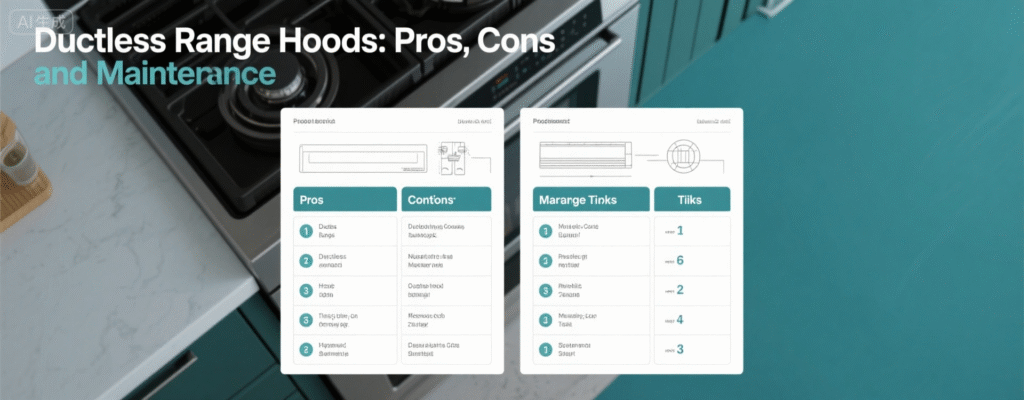For many homeowners, installing a traditional range hood that vents outside is not a feasible option. This is where the vent hood ductless, or recirculating range hood, becomes a compelling alternative. This article will explore how these innovative appliances work, their key benefits, and the crucial maintenance required to ensure they perform effectively, helping you decide if a ductless system is the right fit for your kitchen.
Understanding the Ductless Filtration System
Unlike their ducted counterparts that expel air, a ductless vent hood operates on a recirculation principle. It pulls smoke, steam, and airborne grease into the unit, where it must pass through a series of filters before the cleaned air is pushed back into the kitchen. This system relies primarily on two types of filters working in tandem. The first is an aluminum or stainless steel mesh grease trap, which captures larger grease particles. The second, and most critical for odor control, is a charcoal or carbon filter. These activated carbon filters are responsible for adsorbing cooking odors and fumes, trapping them within the filter’s porous surface.
The effectiveness of this system is entirely dependent on these filters. A 2019 study by the Home Ventilating Institute (HVI) emphasizes that the performance of any recirculating hood is contingent upon regular filter maintenance. Without it, the unit cannot effectively clean the air, leading to a decline in indoor air quality. For those considering this option, exploring a variety of modern ductless range hoods can provide designs that seamlessly integrate into your kitchen’s aesthetic.
Weighing the Pros and Cons for Your Home
The primary advantage of choosing a ductless kitchen hood is the significant reduction in installation complexity and cost. Since no ductwork is required, these units are ideal for apartments, interior kitchens, or any home where installing a duct to an exterior wall is structurally challenging or prohibitively expensive. They offer a versatile and often more affordable solution for immediate air quality improvement.
However, this convenience comes with trade-offs. It is widely acknowledged by experts, including those at the Environmental Protection Agency (EPA) in their 2021 report on indoor air quality, that recirculating range hoods are generally less effective at removing airborne pollutants compared to properly installed ducted systems. They do not remove heat or moisture from the kitchen, which can be a concern in humid climates. Furthermore, the long-term cost and effort of maintenance are higher; the charcoal filters are not cleanable and must be replaced regularly, typically every 3 to 6 months depending on usage, to maintain any level of odor control. When selecting a unit, ensure you choose a reliable vent hood ductless model with readily available replacement filters to ensure ongoing performance.
In summary, a vent hood ductless system offers a practical and flexible ventilation solution where traditional ducting is impossible. Its core function relies on a dual-filtration process to clean and recirculate air, providing a key benefit of easy installation. However, this comes with the caveat of lower overall efficiency in pollutant removal and the recurring responsibility of filter maintenance. Ultimately, your choice depends on your kitchen’s layout and your willingness to commit to a consistent maintenance schedule for a ductless range hood to ensure a fresher cooking environment.
